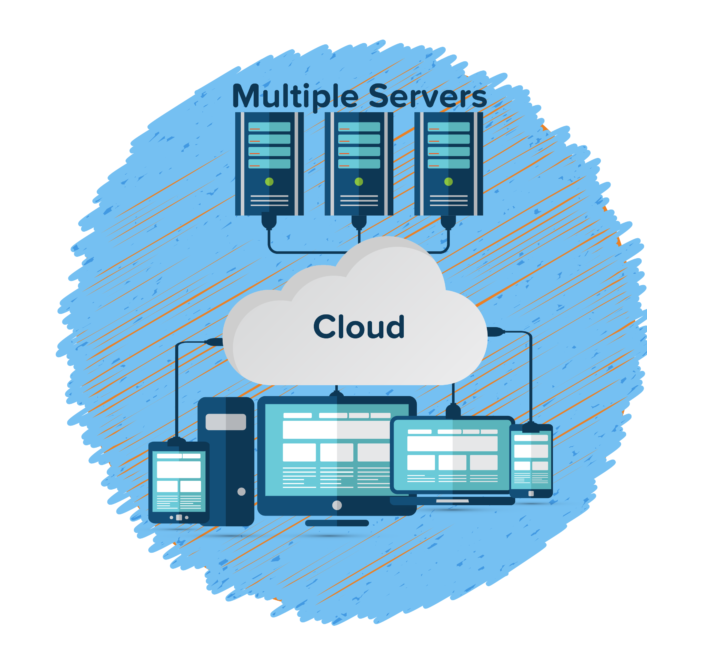Although the term ‘serverless computing’ is a contradiction by itself, it aptly explains the purpose and benefits of such functionality. Automatic provisioning and de-provisioning of resources without leveraging actual servers, has always been a long cherished desire of developers as well as CIOs.
Brief Insight about Serverless Computing
Thanks to cloud computing, it is now possible to easily procure a wide spectrum of tools, processing power, and storage to address fast paced market scenario. However, a select few IT experts are contemplating a far more efficient method of renting huge power of cloud computing to obviate complex management of cloud infrastructure. The idea is to adopt serverless computing.
By going serverless, one does not need to allocate cloud instances that are dormant for a long time before being accessed for driving specific functions or applications. This can be understood by considering devices that are designed to support operations of IoT. These sensor driven tools are only activated whenever a user clicks on the app from his or her internet enabled device such as a smart phone. This is a classic case of event oriented computing.
By adopting serverless cloud computing, one does not need to waste developers’ energy in managing server resources and focus the same on the most important task of writing codes for individual functions. This also explains the use of term Functions as a Service. In order to understand serverless computing, it would be easy to consider the example of renting a house. You are neither supposed to worry about maintenance of the house nor are you required to pay the cost of construction.
Serverless made its debut in 2014 when AWS Lambda was presented by Amazon and it has been a seamless source of amazing innovations and solutions since then. Serverless is also improved the way codes are written and applications are deployed.
In a serverless environment application logic is executed in such a way that all physical systems including operating systems, virtual machines, and servers are obviated by means of software architecture. The serverless ecosystem leverages physical servers and VMs while running on top of an Operating System.
Unlike other conventional cloud computing environments, a software developer can enjoy freedom from the time consuming tasks of infrastructure management to concentrate on his or her core competency. In a serverless approach, developers are only concerned with use of the infrastructure and not the nitty-gritty of infrastructure management. Needless to mention, users of serverless computing services are not required to pay for Virtual Machines Hosting or server equipment.
The entire onus of smoothly running IT infrastructure is on the third party provider of cloud computing services. Service provider also has liberty to dynamically shift resources of the cloud infrastructure and allocate to different users by following a need based approach.
Usually, there is no need to implement a workload permanently for a specific customer since specially developed software can manage the process of managing requests from all customers. Service providers use the amount of time required to process requests from a customer as the basis for billing.
In comparison with operating a dedicated IT infrastructure, a serverless approach offers amazing benefits to users that need to address frequent demand fluctuations. In addition to freedom from management and maintenance of on-premise server equipment, you can effectively handle unexpected rise and fall of resource requirement while operating in a serverless environment.
Serverless Computing- Merits and Demerits
Users are able to eliminate need to employ system administrators because serverless computing solutions help simplify packaging and look after deployment. There is a considerable mitigation of software complexity as serverless computing is capable of being implemented as functions. It is therefore ideal for addressing needs of micro-services.
You can significantly reduce operating costs as well as efforts that are required for scaling to help developers focus on their primary job of effective coding and faster delivery. Moreover, there is no need to worry about upgrading the existing servers or adding new ones from now and then.
On the flip side, a variety of performance associated concerns prevent serverless computing from being considered as the perfect approach. The entire infrastructure suffers inherently from possibility of greater latency. It needs to be understood how the model can reciprocate requirement of applications without latency. Individual allocation of virtual servers can alternatively be used for running applications that are performance-intensive.
Till the time specific tools for debugging as well as monitoring have not been developed, these activities will continue to be a major constraint of any serverless environment.
In Conclusion
Developers can pay their seamless attention to coding in order to achieve faster deliveries with help of a serverless computing solution. The serverless approach is an ideal way to reduce complexity of system administration by eliminating complex tasks of configuring VMs or dedicated servers.






 Live Chat
Live Chat
